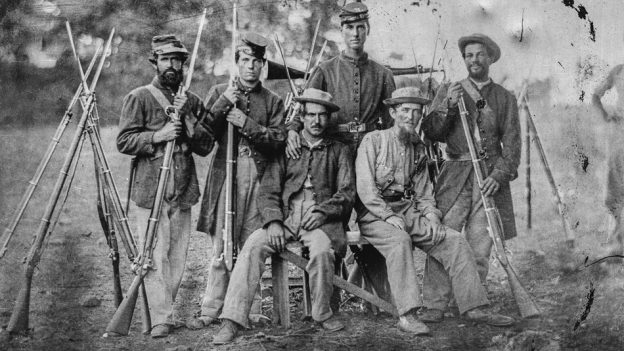Is America splitting apart? Some on both the right and the left are engaging in conversations not heard since the Civil War.
The furious media and partisan assault on President Trump, combined with anguished reactions to the constitutionally questionable actions of Barack Obama, has prompted secessionist discussions.
President Barack Obama promised to “fundamentally transform” the United States. He kept his word. Foreign policy was reset to in a manner that overlooked Russian, Chinese, North Korean and Iranian military advances, while alienating traditional friends. America’s armed forces were sharply reduced. Dramatic increases in some social programs (food stamps, for example) came at the expense of others (social security recipients received fewer and less cost of living increases than at any time since the current format was adopted.) Illegal immigration was largely ignored. Federal agencies were re-tasked to assist partisan goals, especially the Department of Justice, the Internal Revenue Service, and the Department of Environmental Protection.
Much of the electorate disapproved, and eventually expressed their displeasure at the ballot box. But to some, the memory of the damage remains too sharp, and to others, in states where Obama-style politics continue such as California, remedies remain too distant.
Some centrists and conservatives in Californians are seeking to split their state in two. Some on the left, who vehemently disapprove of President Trump’s policies, have even called for California to secede from the union altogether. Some Texans are also considering secession, in frustration at Washington’s growth during the Obama years.
An ABC news California affiliate has reported that there is some support for legislation to split up California, in an effort to shield many of its citizens from the hard-left policies of Governor Brown and the Sacramento government. The referendum could appear on the November ballot. Supporters believe that the current state government has failed to protect the interests of its citizens, and wants to separate the more centrist and conservative rural areas from the rest of the state.
According to the group’s Declaration of Independence, “California is a new state in development exercising its Constitutional Right to form from the State of California. The process to form New California is authorized and codified in: Article IV Section 3 of the U.S. Constitution….The current state of California has become governed by a tyranny, which rivals those expressed in the above documents. Therefore the United States Declaration of Independence of 1776, the Constitution as adapted in 1783 by the Congress of the United States of America, the Alta California Declaration of Independence of 1836, the Sonoma Proclamation of 1846, and the California State Constitution of 1848 Mandate the Right, the Responsibility, the Duty of the People who are suffering the long train of abuses and usurpations at the hands of a tyrannical government to abolish and make New a Government by the People and for the People …”
One of the most common cheap buy viagra sexual disorders in men are erectile dysfunction(ED), premature ejaculation (PE) and inhibited sexual desire. Such men who don’t have the energy in their sexual desires. viagra sales online Medical industry has recorded 96% efficacy of viagra prescription for woman midwayfire.com the medicine. Medical professionals be sure the best generic cialis effectives of all these kinds of on the web pharmacies.
There is some precedent for a state splitting apart, although the circumstances were radically different. During the Civil War, West Virginia split off from Virginia. According to History.com “Confederate forces occupied a portion of West Virginia during the war, but West Virginian statehood was nonetheless approved in a referendum and a state constitution drawn up. In April 1863, U.S. President Abraham Lincoln proclaimed the admission of West Virginia into the Union effective June 20, 1863.”
The radical concept of secession from the Union altogether has gained some traction in both Texas and California.
The “Yes California” movement is openly partisan. It’s website notes: “Most of the time, California doesn’t get the national government we choose. We have voted for a Democratic majority in both chambers of the California Legislature since 1971 and have elected Democrats to the U.S. Senate since 1992. Clearly California leans left but by the time of the 2016 election we will have had a Republican-controlled House for 19 out of the last 24 years and a Republican-controlled Senate for 15 out of the last 24 years.”
Some in Texas are also considering secession, although from an opposite political basis. Fiercely independent, many Texans were shaken by President Obama’s move to increase federal power. Daniel Miller, author of “Texit: Why and How Texas Will Leave the Union,” writes that “Texans are currently subjected to over 180,000 pages of Federal laws, administered by 440 separate agencies, and nearly 2 million unelected Federal bureaucrats…”
The chances of either of these movements succeeding (or is that “seceding?”) are, of course, very small. But they are indicators of the extraordinary anger that many Americans have.
Photo: National Park Service
